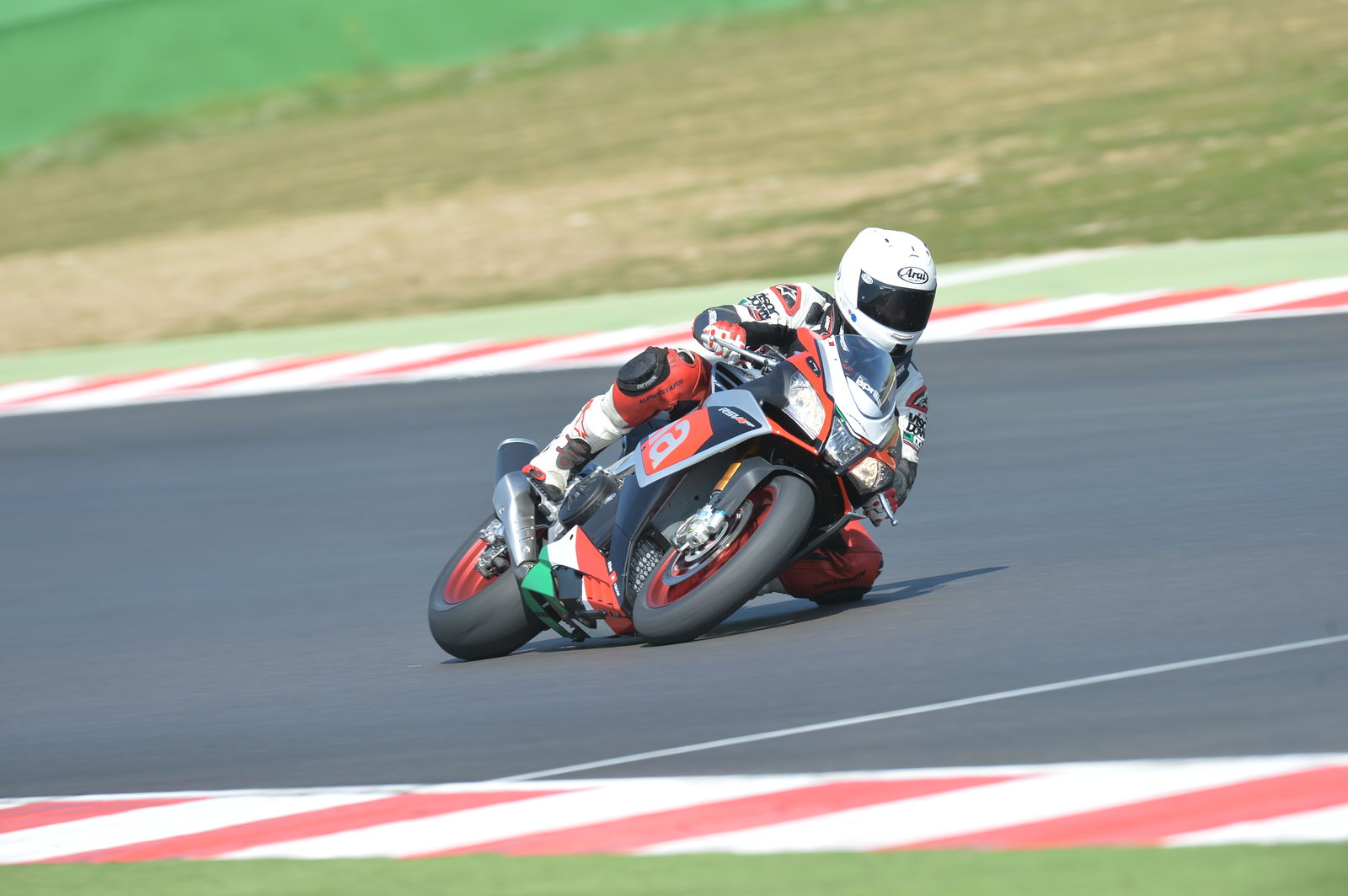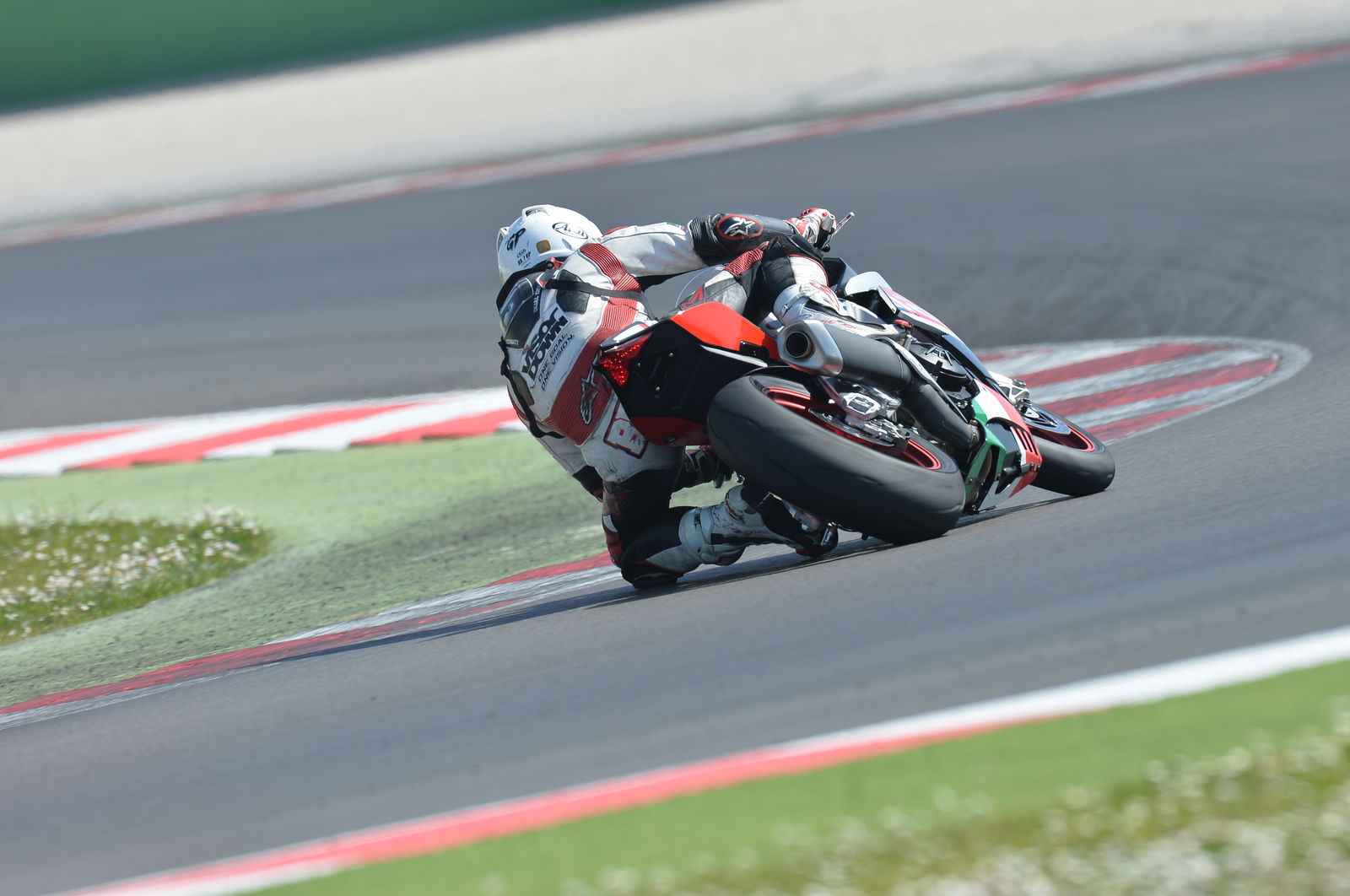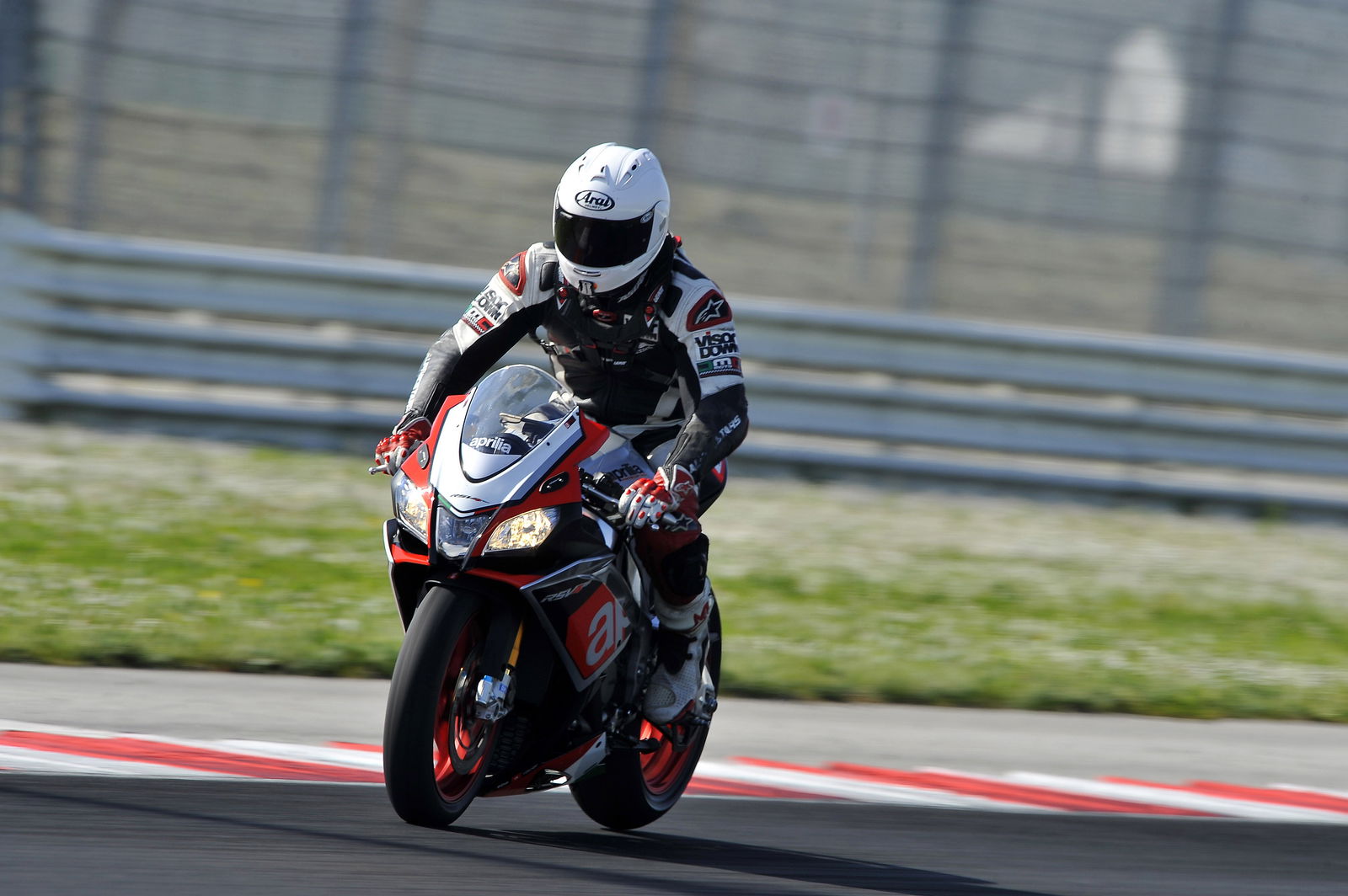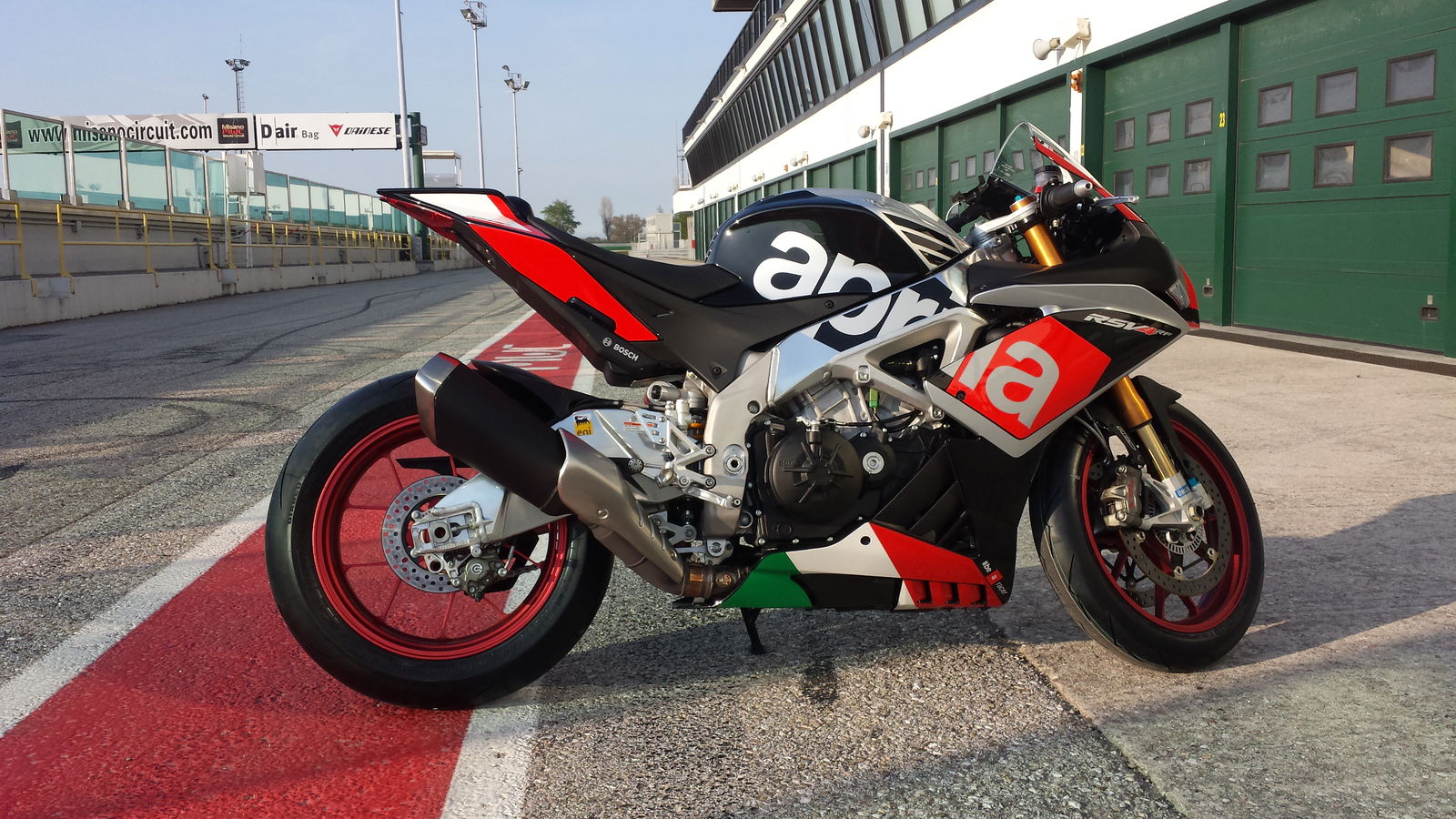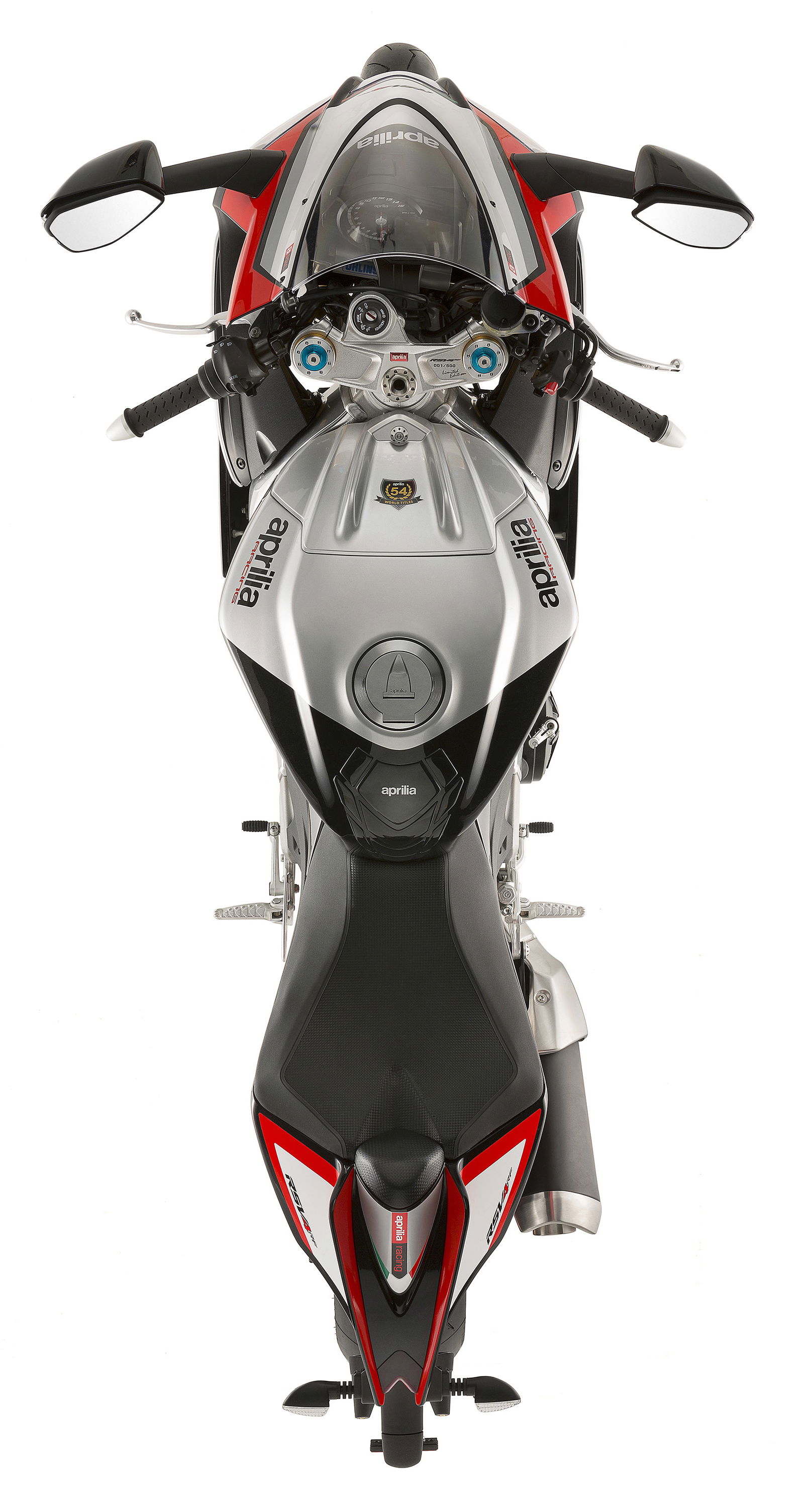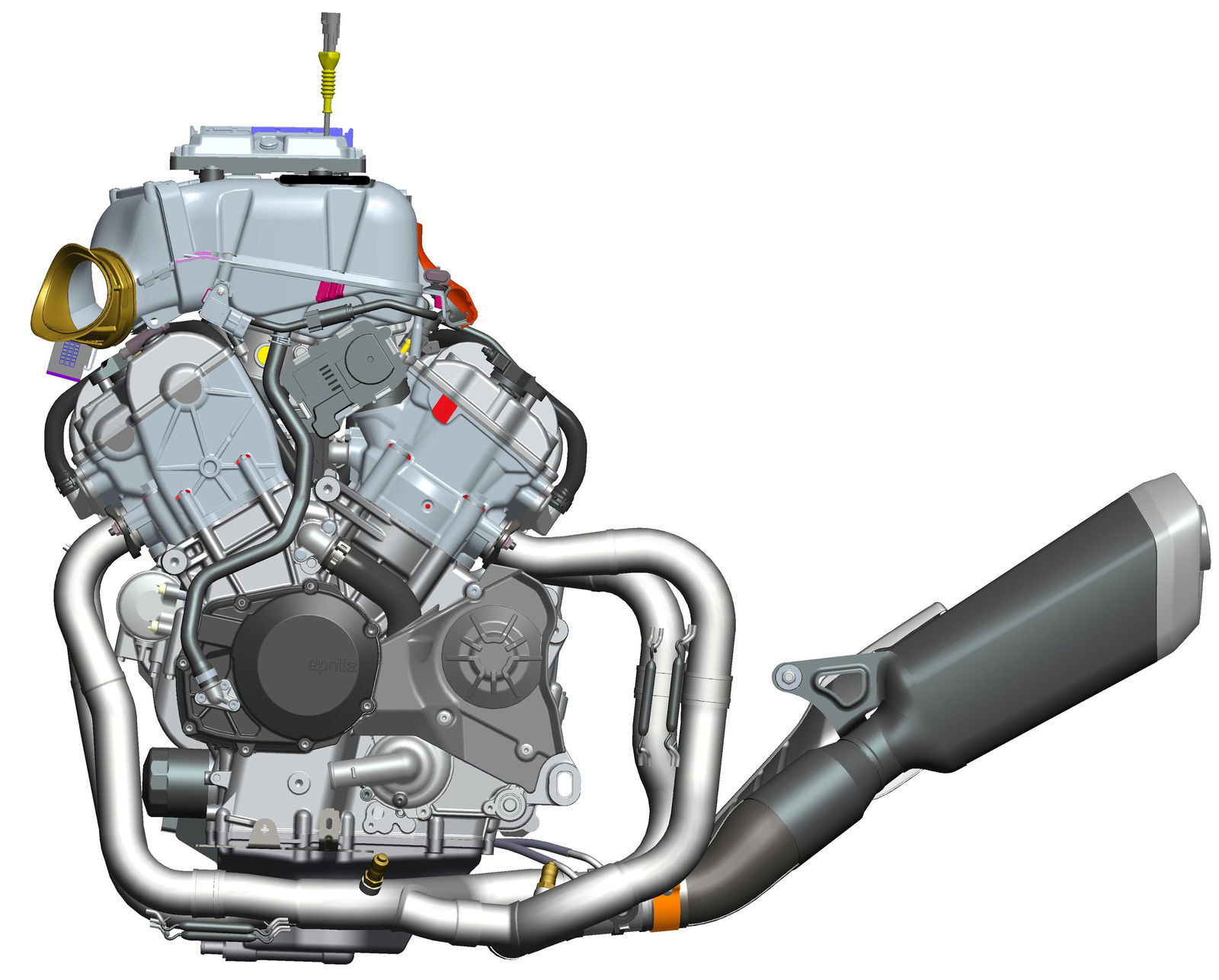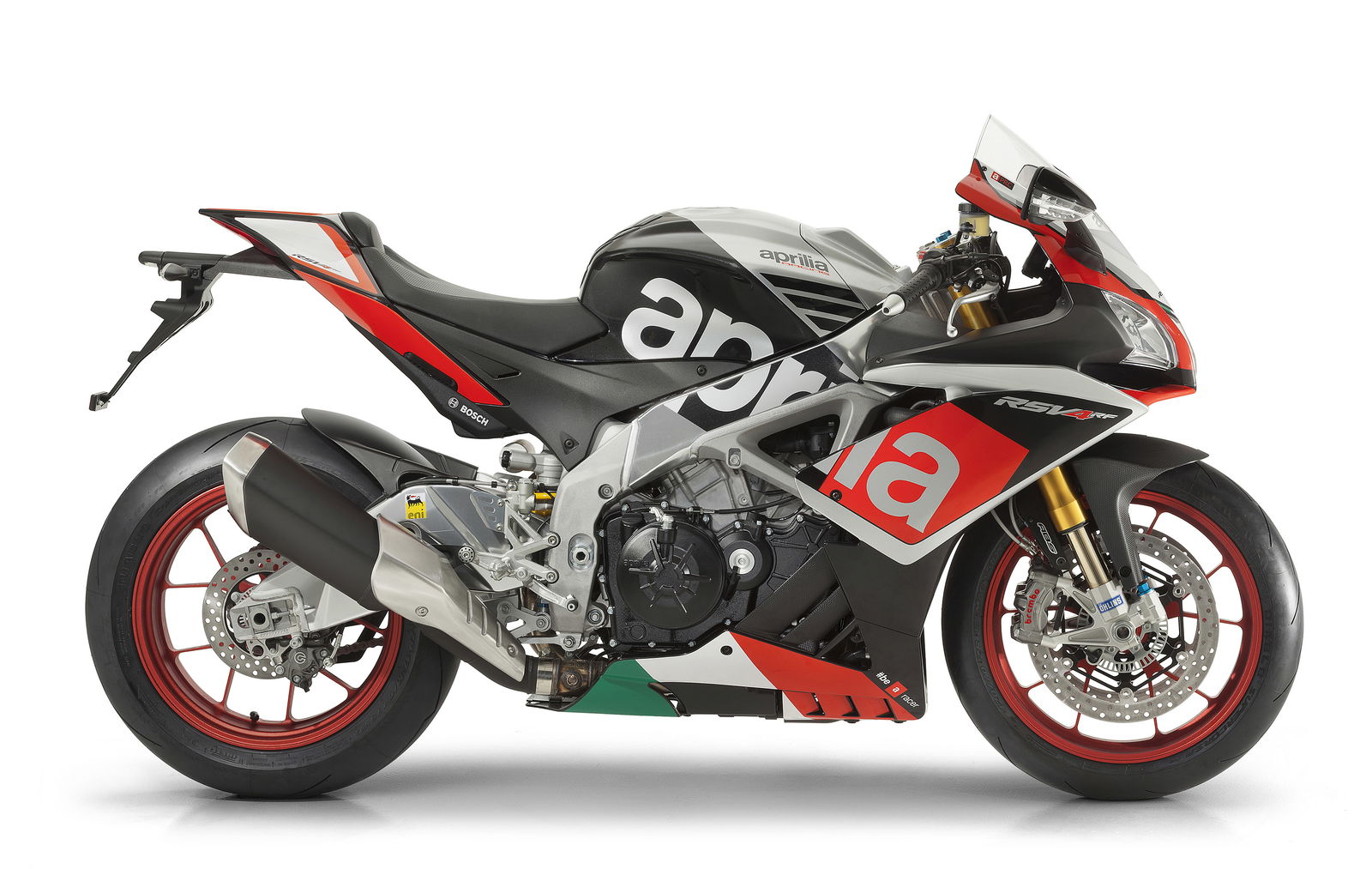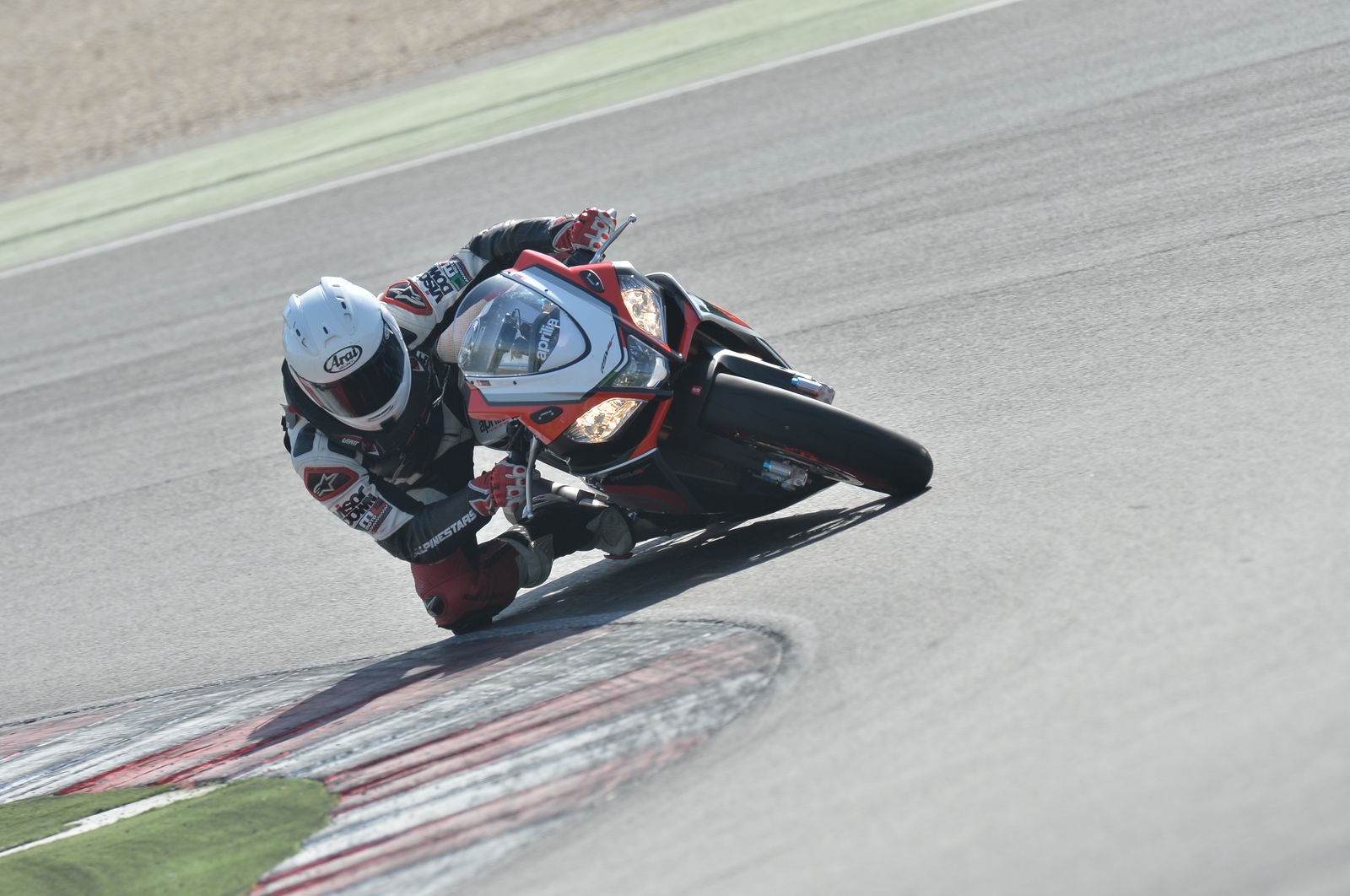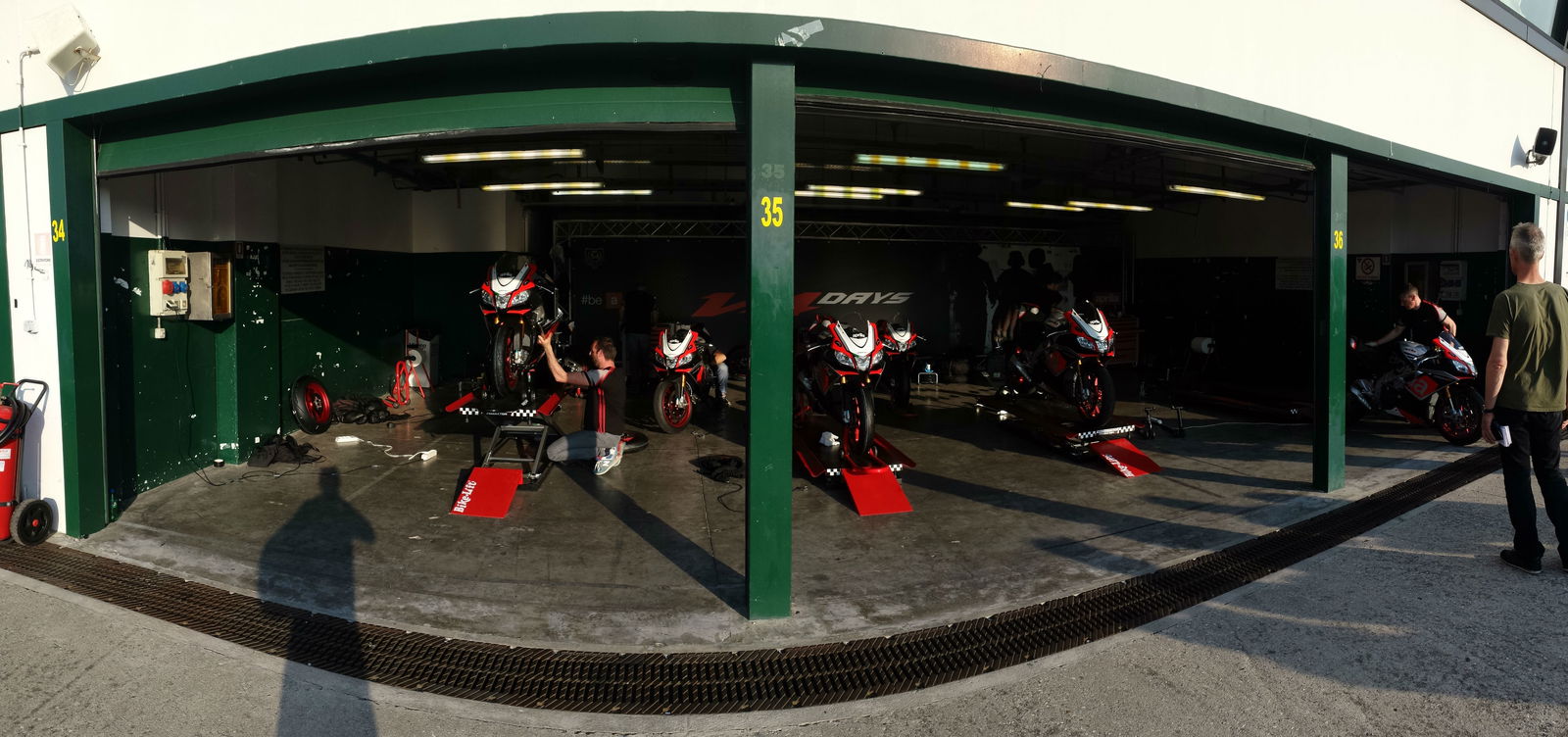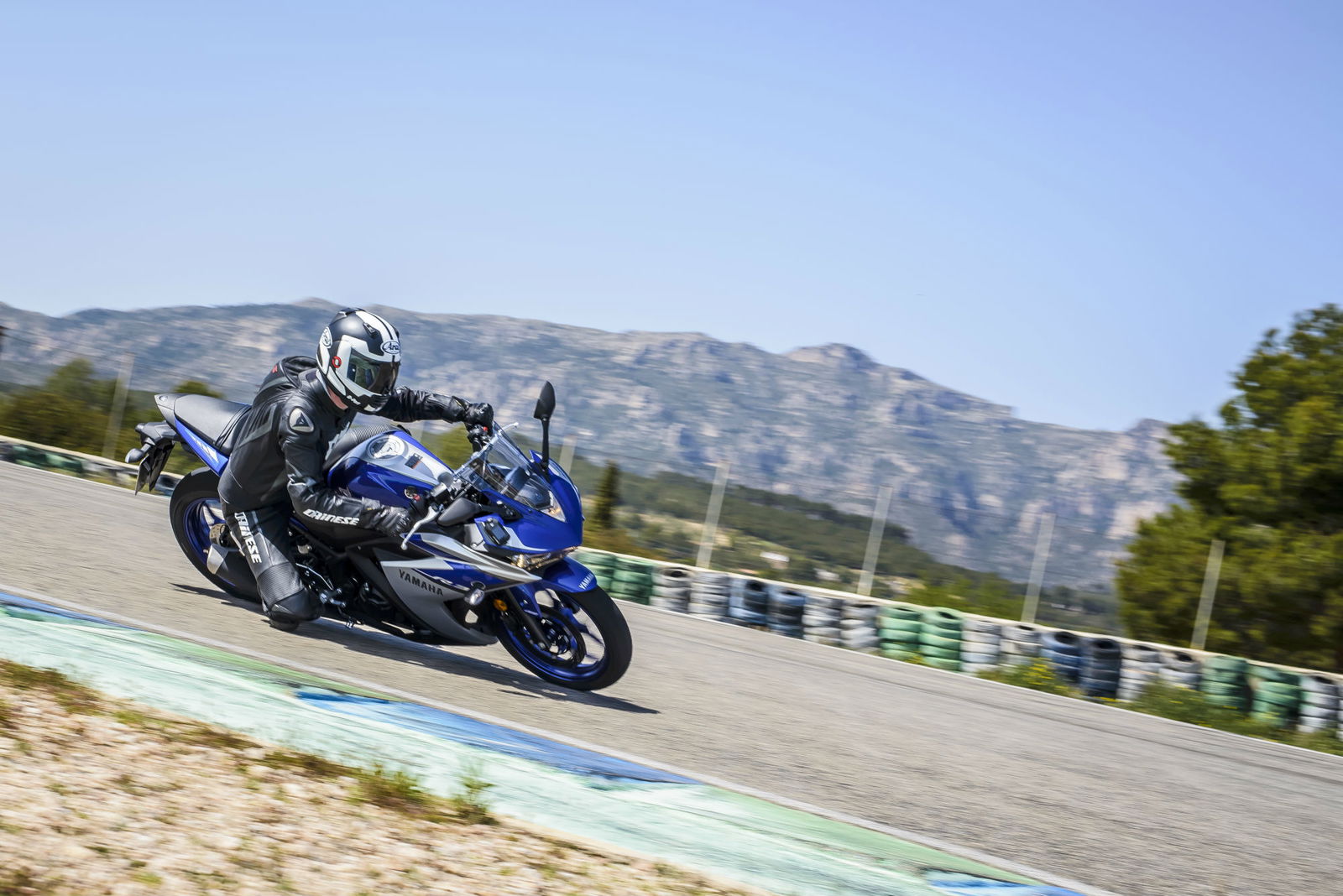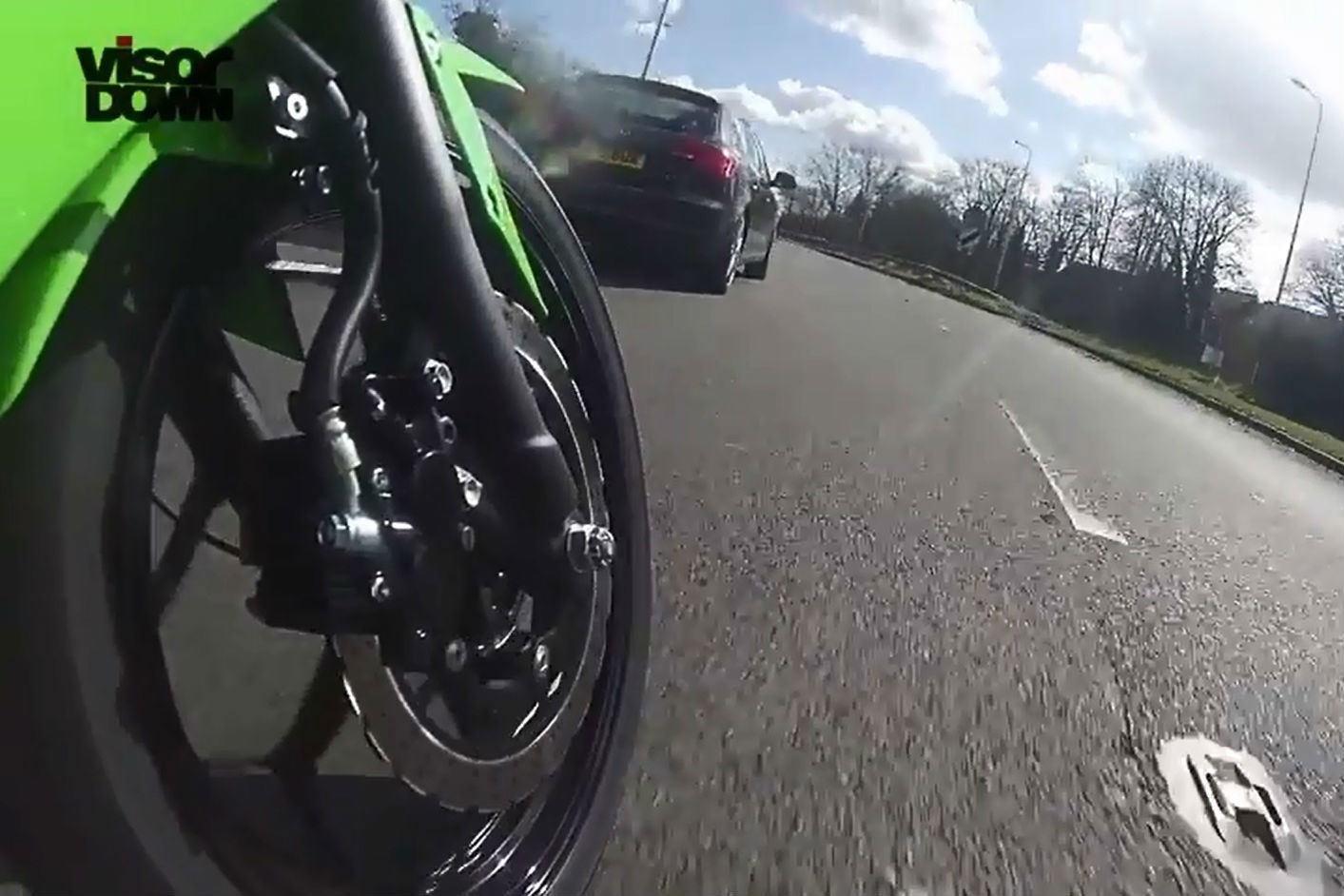First ride: Aprilia RSV4 RF review
Like back-to-basics simplicity? You'll love the new gadget-packed RSV4 RF

BACK to basics. That seems to be the mantra in motorcycling at the moment, from 'yard built' cafe racers to unashamedly gadget-free budget bikes.
It seems that a growing core of bikers are searching for that honest motorcycling experience, from an era where you could tweak the throttle and trace the tightening cables through the bike. Old-school. Just you and the bike. No gizmos, no gadgets.
If you follow this back to basics mantra, well, you'll hate Aprilia's RSV4 RF.
It is Aprilia's £18,000 Top Trump. The latest, the most advanced, the cream of the already very creamy RSV4 crop. More tech, less weight, more power; you've heard the story a million times before.
So what exactly is the RSV4 RF? To figure that out, we need to talk about the RSV4 RR.
The RSV4 RR is the new RSV4 and takes over from the RSV4 APRC ABS. The list of changes is enormous (eight pages of a press-pack, no less) and varies from the big stuff you care about; a claimed 16hp power increase, to the small stuff you don't; the inlet valves are now 33mm, up 1mm from the previous model.
The RSV4 RF is a limited-to-500-units RSV4 RR but with Aprilia's Race Pack, RF-only 'Superpole' graphics and a plaque on the top yoke. If you're going to shell out 18 grand on a motorcycle, you'd want a plaque thrown into the deal. Don't act like you wouldn't.
The Race Pack consists of a set of forged aluminium wheels, Ohlins suspension front and rear and an Ohlins steering damper. Simple.
What's confusing is that the RSV4 RR won't be coming to the UK, so you can only buy the RSV4 RF. Got it? Good.
A claimed 201hp at the crank is a ridiculous amount of power and I bet you the plaque from your top yoke that the RSV4 RR doesn't make anywhere near that at the rear wheel (while the likes of the new R1 and 1299 Panigale do). Aprilia is clearly excited by the number but it seems to me that gloating about peak power is a hiding to nothing because the RSV4 has never been about top power numbers.
The strength of Aprilia's 65-degree V4 is in its natural characteristics, from its cute physical dimensions (a 60-degree V4 wouldn't allow enough space for the throttle bodies to sit snugly between the cylinder heads but the 65 does), to its lighter crank that helps make it so effortless to steer, to its torque-rich power delivery and last but not least, the racket it makes.
The RSV4 has always been superbike royalty, despite its 'lack' of power compared to its rivals. So when the claim is 201hp but the bike rolls off the dyno with 185hp, the temptation is to think that the RSV4 is all fart and no sh.. ..but that would be missing the point. This is a bike that excels in one area: how it makes you feel.
Aprilia has crammed a bunch of acronyms into the package. The APRC (is as easy as) ATC, AWC, AQS, ALC and that's not forgetting the RbW, three riding modes and good old-fashioned ABS. Race ABS, no less.
Traction control, wheelie control, a quick-shifter, launch control, anti-lock brakes and I almost forgot V4-MP, a telemetry package that allows you to map your lap via a smart-phone app and via GPS recognition, and load pre-programmed traction control settings for the circuit you're at. The back to basics brigade will choke on their flat whites when they hear about it.
Misano is the venue for the RSV4 RF launch and it's a track that features every type of challenge, from a flat-in-fifth right-hander, to keep-coming-back-on-yourself first-gear hairpins. It's a well chosen track for this bike as it plays to most of its strong points, which come to light when you've got the bike on its ear.
Through Turn 11, Misano's fifth-gear right-hander, forget power, you need a bike with laser-guided accuracy and a front end you can trust. In the run up to Turn 11, the bike wasn't as stable as I'd have liked down the big back straight (although some testers had this dialled out with the addition of more pre-load on the rear) but that was a small price to pay for how it feels once it's more than five-degrees from upright.
The initial turn-in to a fast corner is the point where you figure out whether your front-end's got what it takes and it's always the last place you want to find out it hasn't, but the RSV4's front end is planted and feels better the more you lean on it. After a few laps I know the bike could tip into Turn 11 at the top of fifth, just shy of 150mph but it's just a case of whether or not I've got the balls to do it.
Speed and lean don't seem to phase this bike. Through Turn 11 it doesn't understeer or feel vague, it's every bit the race bike; precise, tight and full of feedback - as you'd expect from a bike that boasts Ohlins suspension and lightweight wheels.
The braking from 140mph for Turn 13, a 70mph second gear right-hander, starts through Turn 12. It's a place where you're braking harder than you'd like for the amount of angle you're carrying. In front, a large gravel trap; over to the right, the corner I need to get to. Taking a big squeeze of the Brembo M430 calipers at this speed feels like suicide but the front tyre takes the strain. The bike digs in and I find myself entering Turn 13 slower than I want to. The amount of front brake you can carry in is staggering.
Riding the RSV4 requires a decent amount of recalibration of the rider. The motor is a peach, it bellows and grumbles while gargling its revs. It sounds like there's a MotoGP race going on underneath you.
Feeding it gears feels like you're offering up a block of wood to a massive bench saw. The pitch of the motor changes as it digs into the next gear. The revs hold just for that fraction of a second and you feel the bars resonate with the increased load momentarily but the motor just keeps on pulling. At no point does it feel frantic and that can catch you out. The RSV4 RF has very tall gearing and racks up speed to a point where your ears don't believe your eyes. The moment you get on the brakes, you realise your eyes weren't lying.
The RSV4 RF boasts Race ABS which isn't quite as good as other Race ABS packages I've tried. I'm not bothered about ABS on the front wheel on track as long as the rear ABS isn't engaged. Most Race ABS systems allow this, but on the RSV4 RF the Race ABS just means less sensitive ABS, while the rear remains on. With my riding style, that was something I bumped into a few times over the lap. I use the rear brake to keep the bike stable, in some cases when I'm anchoring on in a big braking zone but also as a slight trim to keep me tight into a corner. I kept feeling the rear ABS in tight corners, so didn't use the back brake after the first session. You can always switch off the ABS completely.
Despite my insignificant rear ABS issue, the RSV4 RF is possibly the best bike I've ridden when it comes to corner entry. The front end is sublime but the Race mode helps by adjusting the engine braking to a minimum. Add in the slipper clutch and you can slide into corners in the same way you slid across a polished floor in your socks when you were eight years old. You can be fairly crude when piling into a corner and you won't get chatter from the chassis, no clattering from the engine and if, like me, you're programmed to match the revs on down shifts, you'll have to re-calibrate that too. Stomp down on the box, let the clutch out and you're in.
When it comes to technology on a bike, for me the best gadgets are the ones you can't feel. Possibly the best example of this on the RSV4 RF is Aprilia's Traction Control. Some people don't like traction control because it feels like cheating. I don't know if Aprilia's traction control is cheating because I couldn't feel it working and only knew it was when I provoked the engine with a sharp jab of the throttle. Traction control that kicks in and lets you know it's working is, in most cases, annoying, as you only feel it when it's holding you back. The ATC trims the power delivery in such a microscopic way that driving out of a corner, especially slow ones, you never feel the traction control working. It's smoother than Scarlett Johansson's silk knickers. If fine tuning is your thing, you can adjust the traction control on the go using the up/down buttons on the left-hand switchgear, just as easily as using your indicators. Set in mode five of eight, it will allow the rear to get a little bit loose while still keeping things under control. But if you're after the full silk knickers experience, stick it into mode one or two and you'll be convinced that any power slides out of corners are down to your immaculate throttle control. I know mine were.
Thankfully it's not all perfect (where would the fun be in that?). On the day, I'd have liked to have sorted out the straight line stability (which the mechanics easily dialled out with more pre-load on other bikes) and thanks to that lack of rear pre-load, the bike felt slightly nervous when sitting upright through a side-to-side flick, similar to when a bike doesn't have a steering damper. There's a slightly uncomfortable bar-wagging moment that you hope doesn't escalate much before the approaching corner.
The other slight issue I had (on a maximum of three of the 500+ gear-changes I put the RSV4 RF through) was with the quick-shifter not engaging. It could have just been that I wasn't putting enough force through the lever but the correlating gear read-out on the dash looked, on those occasions, like it wasn't on the same page as the rest of the bike. For a fraction of a second, it wouldn't let me have the gear I was after. Other than that, dynamically, I couldn't fault it. The bike got better with every session.
The other areas I'd like to see Aprilia improve are moot points but significant given the price tag. The first is the finish of the footpegs, which look like they came from a Cagiva Mito 125. I know it's not the be-all-and-end-all and most people will ditch them anyway but you wouldn't be impressed if your Rolex came in a tin box. Talking of tin, there's also a heat shield to protect the undertray from the rear cylinder's exhaust pipes. I imagine it's meant to look a bit raw, like the Factory superbike, but it actually looks like a bit of an afterthought. Finally the dash control options and buttons you need to press to adjust the various settings are far from intuitive. It's like trying to figure out how to set the clock on your oven.
While I was impressed with the technology on offer, Aprilia are probably already working on things the rivals currently offer: auto-blipping down-changes (they sound like fun), a TFT touch-screen display and cornering ABS. No doubt they'll be on the next one.
The RSV4 RF is the antithesis of the back to basics mantra but all the technology doesn't numb the feel you get from the bike. Quite the opposite. The RSV4 RF makes you feel like you're doing everything right, like you're directly connected to the engine via a pair of good old fashioned throttle cables. It does exactly what you intend it to do, although that may be slightly different to what you actually told it to do. And that's the bit I find fascinating. The RSV4 RF is blisteringly fast but it's not just about the pace, it's about how it makes you feel as a rider.
The back to basics bikers would hate the fact that they'd love this bike. Forget the gadgets and gizmos, it's just you and a bike that allows you to focus on - and enjoy - one thing in its purest form: riding.
Model tested: 2015 Aprilia RSV4-RF
Engine: 999.6cc 65-degree V4
Price: £18,135
Power: 201hp at the crank at 13,000rpm (claimed)
Torque: 84.8lbft at 10,500rpm
Weight: 199kg (no battery or fluids)
Tank capacity: 18.5 litres
Seat height: 840mm
Available: now
Watch Ben's onboard lap
